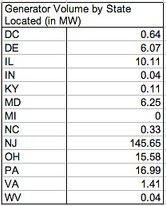Our August auction was the first auction of the NJ2012 reporting year (RY2012). In New Jersey, the reporting year runs from June 1 to May 31, and dictates the vintage year of a given SREC. June SRECs, the first generation month of RY2012, were first available for trading in the August auction and showed a significant price drop compared to RY2011 SRECs. The price drop reflects the anticipated oversupply of SRECs for RY2012. Previously, in RY2011 and prior, buyers had faced an under-supplied market and were willing to pay high prices. RY2012, however, will be the first year in the NJ market with an oversupply of SRECs.
RY2012 SRECs traded on July 29th at $276.16, approximately 50% less than the RY2011 prices. Prices for RY2011 SRECs (June 2010 – May 2011) remained high at $564.99. Given that compliance buyers have until the end of September to purchase their required RY2011 SRECs, RY2011 SRECs should remain in demand until that time.
For RY2011, SREC compliance buyers are required to purchase 306,000 SRECs, but SREC production fell short of this goal as the energy year came to a close. As of this posting, PJM-GATS reported that approximately 276,000 NJ2011 SRECs have been issued, representing a shortage of 30,000 SRECs. In RY2012, 442,000 SRECs will need to be procured, an increase of 136,000 SRECs, or approximately 113 MW. Given this increase the market is intended to only average 10 MW of solar development each month, though as the graph below shows, growth has averaged 20.1 MW per month since the beginning of 2011.
New Jersey started the 2012 reporting year in June at 339.6 MW of installed capacity, approximately 28.7 MW less than the targeted average of 368.3 MW. As of the end of July, the NJ Board of Public Utilities announced the state surpassed 380 MW of installed capacity, adding more than 40 MW in June. Considering recent capacity added and additional growth through RY2012, the market will have enough supply online to create 442,000 SRECs in the 2012 reporting year.
On the legislative front, the New Jersey State Senate recently passed S2371, a bill intended to help stabilize the NJ SREC market. The bill has yet to move to the State Assembly and the Governor’s desk, but if passed, it would move the SREC compliance requirements forward one year, with RY2014 SREC requirements replacing those in place for RY2013.
Tweet


